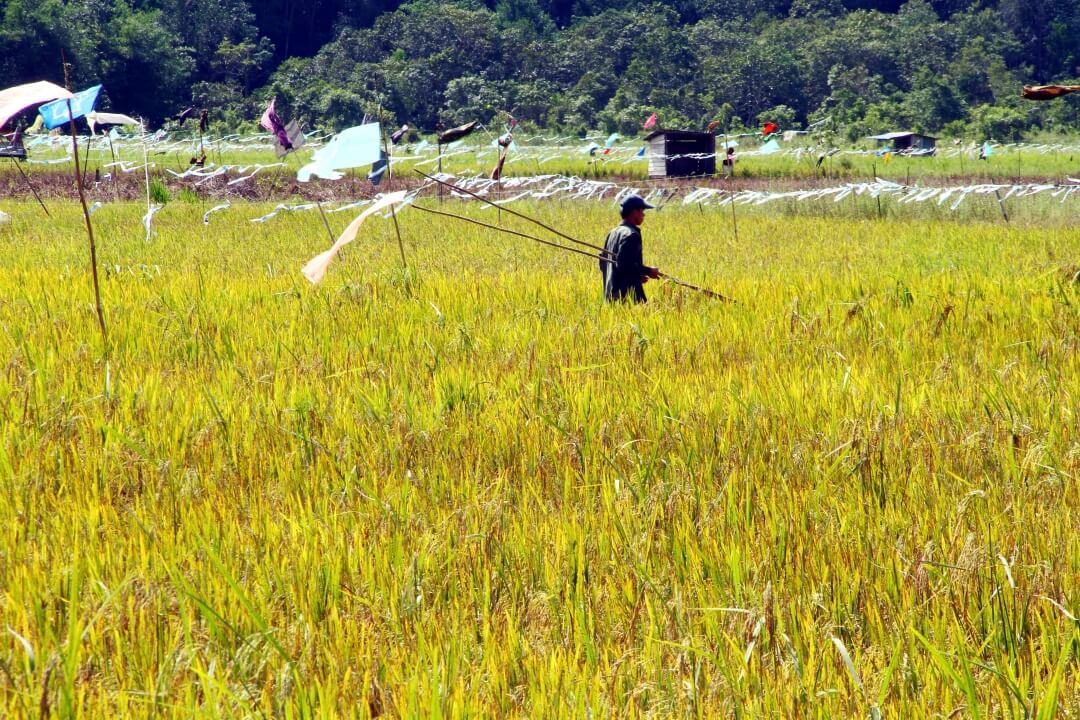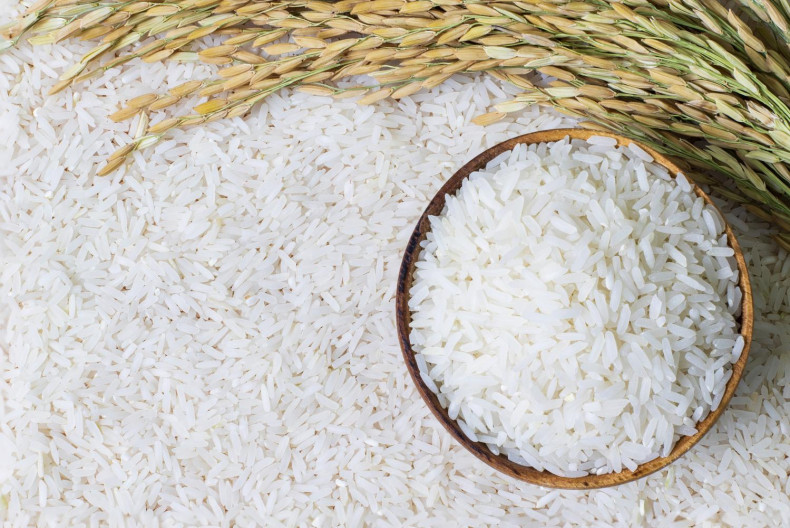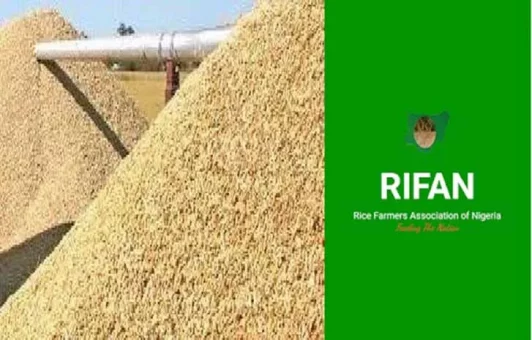Tags
In Kerala, paddy farmers are becoming the worst victims of rainfall deficiency
There will be a minimum drop of 30 per cent in paddy cultivation during the present season, according to preliminary estimates

At Elavanchery in Kerala’s traditional rice bowl, Palakkad, farmer KC Muraleedharan has reasons to believe that his gods have stopped smiling on them.
He is part of a farmers’ collective that cultivates paddy in the traditional rice fields of Karukamari, Ilamplav, Kuzhalode and Undiyampadam villages, which are spread over 200 acres together.
While sowing the seeds during the last week of June, he and his fellow farmers anticipated copious rains in July and August, with the escalation of the southwest monsoon.
But rains continue to evade Elavanchery and the surrounding eastern panchayats of Palakkad district despite the return of the monsoon in its final phase, at least in some parts of Kerala.
“The monsoon might have returned to the southern districts of Kerala, like Thiruvananthapuram and Pathanamthitta. In our case, a drought-like situation persists because of the lack of rain and irrigation. The paddy saplings are wilting in the absence of water, and we are clueless about how to deal with the situation,” said Muraleedharan.
Tradition broken
According to him, he followed the traditional farming practices of his family. He started sowing seeds during Thiruvathira Njattuvela, an important period in the Malayalam calendar ideal for initiating agricultural activities.
Thuruvathira Njattuvela is between June 21 and July 4, and it is famous for continuous but moderate rains, which facilitate the initiation of agricultural activities.
Since time immemorial, Thiruvathira Njattuvela was stable and permanent every year in the region. So much so that, King Zamorin of Kozhikode in present-day Northern Kerala famously once said, “The foreign invaders can take away our valuable agricultural products and spices, but they can’t rob us of our Thiruvathira Njattuvela.”
But Murakeedharan said that there was no rain in his locality between June 21 and July 4.
Across the Palakkad district, there is a 54 per cent rain deficit. Farmers say the lack of periodic repairs on canals has aggravated the crisis as irrigation is affected.
The farmers say that the drought-like situation is affecting water storage in the Malampuzha and Pothundi dams in the district.
A little away in the hill district of Wayanad, the crisis is extremely severe, as the deficit is estimated at 58 per cent. S Usha, an agricultural researcher working with paddy cultivation collectives in Mannathawady, Wayanad, said:
The crisis is affecting us at different levels. In Wayanad, we are facing both drinking water and irrigation scarcity. Paddy farms are drying up and the crops are wilting, while drinking water scarcity looms large across the hill district.
“The rains are back in many places throughout the state, but the scarcity persists. The storage levels of drinking water and hydropower generation dams have not increased. Groundwater recharge is also not happening across the state,” she added.
Idukki, the hill district that houses most hydropower projects in the state and cultivates the majority of the cash crops, now stands at number one in the case of the rain deficit, which is measured at 62 per cent. Hardly 30 per cent of storage is now available in the Idukki reservoir, the largest hydropower project that generates 780 megawatts of electricity, according to official data.
In the case of the Sabarigiri reservoir, the storage is now 38 per cent. Both had 80 per cent storage on the same days last year. This is the first time in the recent past that Idukki has faced such a huge deficiency in the case of rain.
In Njarakkal and Vypin areas of Ernakulam district, paddy farmers said the poor monsoon helped the proliferation of weeds, which have devastated paddy seedlings in most fields.
Crop loss
In many rice fields in Thrissur and Ernakulam, even the transplanting of rice seedlings failed because of the lack of rain. And everywhere, the seedlings are wilting under the scorching sun.
“This is the longest dry spell I have witnessed during the monsoon days in the last two decades. With dams, streams and rivers getting dried up, the scope of irrigation is also nil,” said KV Pratheesh, a farmer of Cheeral village in Wayanad.
“We, the farmers, can predict the future by studying present realities. Kerala is now inching towards an unprecedented kind of disaster devoid of rains and deficient in electricity and agricultural generation,” he added.
As per the preliminary estimates of the agricultural department, there will be a minimum drop of 30 per cent in paddy cultivation during the present season.
While the state witnessed 48 per cent below-average rainfall during the southwest monsoon, the precipitation in August was estimated at 80-90 per cent below normal.
Experts said it was the worst August in the last 122 years of Kerala’s history. Along with paddy, the cultivation of tubers and different cash crops has also been badly affected by the lack of rain. According to the Department of Economics and Statistics information, Kerala’s rice cultivation area in 2021-22 was spread over 195,000 hectares and rice production was 562,000 tonnes.
In the previous year, it was 205,000 hectares and 626,000 tonnes, respectively. It indicated a 65,000-acre decrease in rice production and a decline of 9,300 hectares in cultivation. It will fall much more this year.
According to farmers, chemical fertiliser users would be badly affected compared to organic farmers, as chemical farming requires a lot of water.
Farmers are also apprehensive about the nature and character of the Northeast Monsoon. If it also remains poor, the droughts will persist and go from bad to worse in the hot summer months. In the event of heavy rains in November and December, harvesting in the surging rice fields would be challenging.
According to Gopakumar Cholayil, senior scientific officer with the College of Climate Change and Environmental Science at Kerala Agricultural University, there must be initiatives from now on to promote short-duration varieties of rice that can survive adverse weather conditions.
In Wayanad and Idukki, water scarcity will affect tourism and rising water demand by the sector will create conflicts with residents, mostly farmers, according to stakeholders.
Despite the decline in rainy days, sudden downpours causing landslides and flash floods can be expected across the state despite, according to S Abhilash, associate professor of the department of atmospheric ciences at Cochin University of Science and Technology. The state must prepare for extreme weather situations, which include both long drought seasons and occasional cloud bursts of shorter duration, leading to flash floods and landslides.
According to scientists in the India Meteorological Department, as per the long-period average of rainfall in September, the state will have to get a rainfall of 271.8 mm in the coming days of this month. However, wiping out the cumulative monsoon deficit in the four-month season would still be difficult.
https://www.downtoearth.org.in/news/agriculture/in-kerala-paddy-farmers-are-becoming-the-worst-victims-of-rainfall-deficiency-91635Published Date: September 8, 2023








